Cissus: features, types and home care

This plant is often found in office buildings or various hospitals. Cissus is also often grown at home. Many gardeners are simply delighted with its appearance, because it is a climbing plant that will become a real decoration in any house or apartment, with its help you can decorate almost any space. For example, walls where you can simply hang it, stairs that it will completely braid over time, or put ordinary supports.
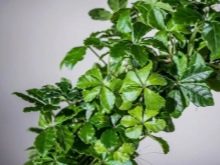

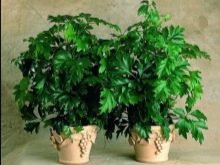
Description
Many people call cissus an indoor vineyard, as it is a shrub that spreads in different directions. Such a plant is able to gain a foothold with its antennae for any suitable support. In addition, some of its species are a bit like the branches of a beautiful tree, thanks to which it is often called a birch.
This plant has beautiful shiny leaves with a glossy surface, as well as a rich bright green color. Their shape and size largely depend on the cissus variety. They are placed on rather long and flexible shoots that grow up to 3 meters in length. Over time, these "vines" are covered with bark. In addition, each shoot has several antennae, with the help of which they can attach to any surface.
If we talk about flowering, then the plant does not differ in special beauty during this period. The flower is a small umbellate inflorescence of a cream or pale green hue. It may happen that at home it will not be possible to see it, but in natural conditions it not only blooms, but also has a large number of fruits, which are small berries with a red or black tint. It is inside the berries that a large number of seeds are located.
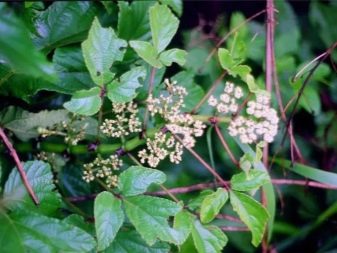
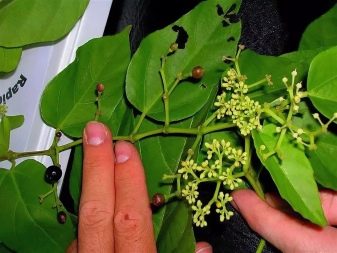
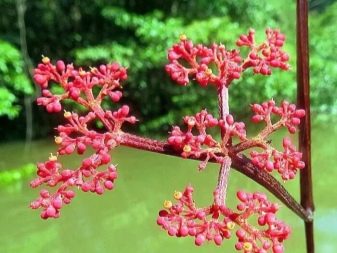
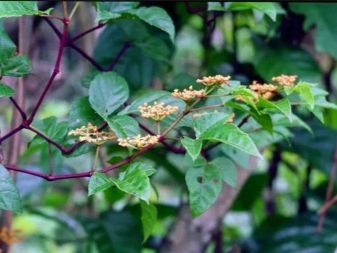
The homeland of Cissus is considered to be the tropical zones of Africa and Australia, as well as the southern part of America. More than 300 species grow in their natural environment, many of which people began to grow at home. In addition, at home, cissus is often used not only for decoration purposes, but also as food or as a means in the fight against malaria.
Many people create real hedges that are not easy to walk through. Besides, this plant quickly adapts to any conditions, so it will not be difficult to grow it at home.
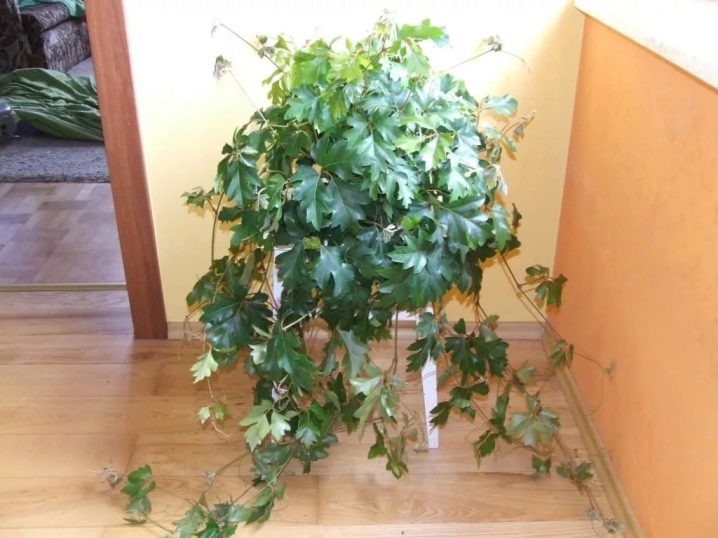
Cissus is often bought precisely because it can purify the air in any room, and also have an antifungal effect.
Varieties
Since there are many species of this plant, it is worth taking a closer look at the popular plants. Some cissus varieties can only be found in botanical gardens.
Diamond-shaped
This type of plant has another name - quadrangular cissus. Its leaf shape is diamond-shaped with jagged edges. The leaves have a bright emerald color. Its shoots are quite flexible and thin, so a support is required for this type of cissus. If flowers appear, then they have a pale green color. Both the petioles and branches of this plant are velvety.
It was to this plant that the name birch was attached. In addition, several varieties were developed on its basis, which are very popular among gardeners. Among them, the most popular Helen Danica, which is distinguished by beautiful carved leaves with a light color. And there is also such a variety as Mandianna. It is resistant to sudden temperature changes and has beautiful glossy leaves.
Many people confuse this subspecies with rhombic cissus. However, this is a completely different plant that is not adapted to domestic conditions and is found only in the wild.

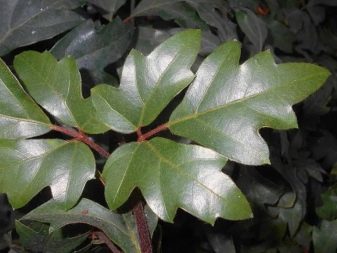
Multicolored
This type of cissus is especially beautiful. Its leaves are dark green in color, moreover, they are covered with silvery specks on top, but they are pink on the bottom. This plant differs in that during the cold season it can completely shed its leaves. In the spring, the branches must be completely cut off, after which they will grow back rather quickly. This cissus requires a little more attention.
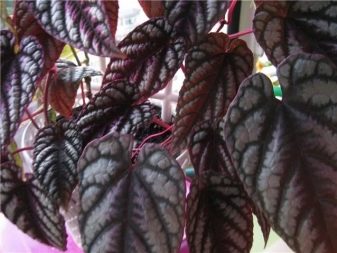
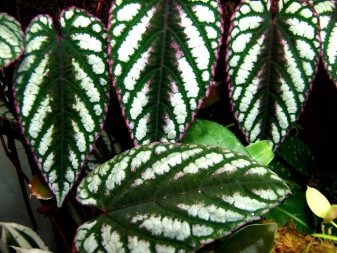
Striata
This flower is also called striped due to its unusual color. On the green leaves, you can see reddish stripes, their shape is more reminiscent of real grapes. However, this view quite hardy and does not require much attention to itself.
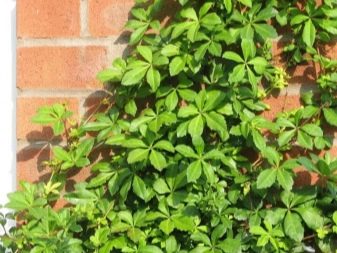
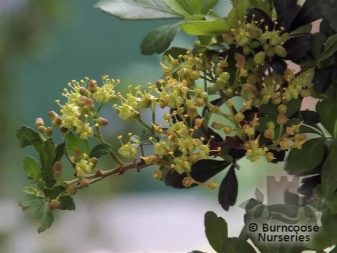
Bicolor
This plant belongs to the grape family. Its full name is cissus discolor. The bicolor cissus has heart-shaped leaves with small teeth running along the very edges. Their color is deep green with small silvery spots. At the bottom, the leaves are colored dark red.
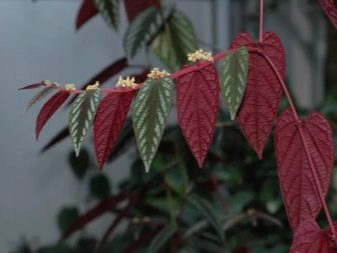
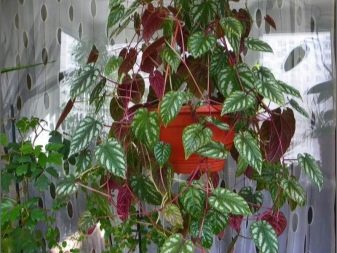
Antarctic
This evergreen flower is quite common among most gardeners. Its leaves are oval with jagged edges, they grow up to 12 centimeters. In addition, they are dark green on top and pale green on the bottom. Its branches, as well as antennae are velvety with a beautiful edge. This species can perfectly exist in various conditions, it is not afraid of hot weather.
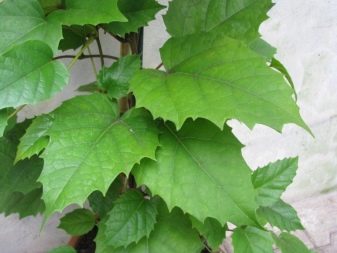

Tuberose
This flower has a long vine with a thickening at the very base. In addition, it forms aerial roots. The leaves of this handsome man are small, but delicate. Sometimes, for the winter period, it can shed its leaves.
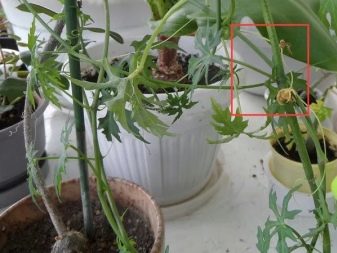

Conditions of detention
Many cissus plants are valued by gardeners not only for their decorative beauty, but also for their unpretentiousness. They do not need to create special conditions for them, because they can grow in any room. However, in order for this plant to always be healthy and lush, it is necessary to familiarize yourself with some points.
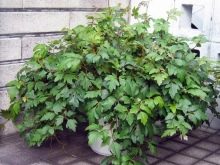
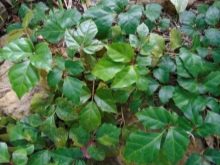

Lighting
Although cissus can grow even in partial shade, it is still worth giving preference to a place where there is a lot of sunshine. Thanks to this arrangement, the flower will be thicker, and its leaves will be bright green in color.
However, it is best to avoid direct sunlight on the bush, so during a large sun it needs to be darkened a little.
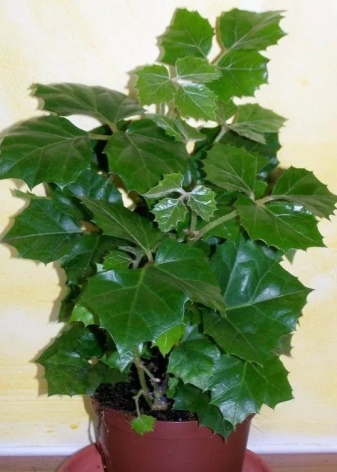
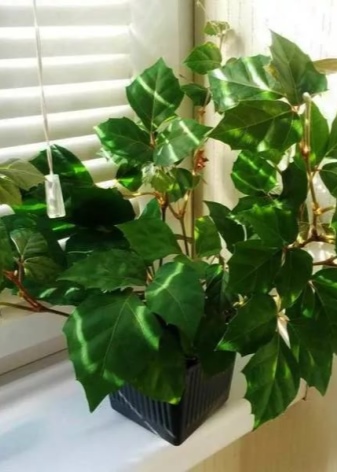
Temperature and humidity
Many gardeners are sure that drafts are very harmful for this plant, therefore they do not take it outside at all. However, this is a completely wrong judgment. It will be useful for him to be in the fresh air, and a light breeze will not harm him at all. But during a cold snap, cissus must be brought into the room. If this is not done, then he will immediately shed the foliage.
It is not necessary to create too much humidification for such a flower. It is enough just to spray it from time to time. However, at the same time, there should be no stains on the leaves. Therefore, it is best to use well-settled water. In some cases, you can put a small container of water near the flowerpot.
Important! "Domesticated" plants can withstand temperatures from 10 to 27 degrees Celsius, but there are some specimens that can feel great even if the temperature drops to +5 degrees.
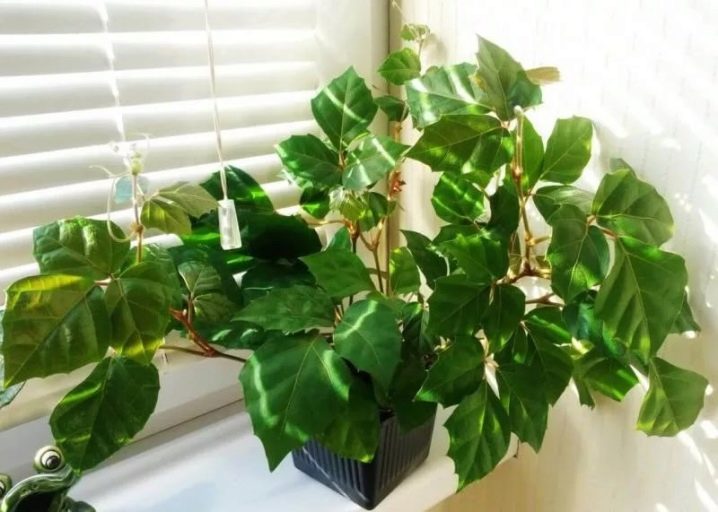
How to care?
Caring for cissus at home is quite simple and does not require a lot of effort. If you do everything correctly, then you can grow a perfectly healthy plant that will delight its owners throughout the year.
Top dressing
Since this plant uses a large amount of nutrients and minerals, it is necessary to feed it quite often. This should be done at intervals of 2 weeks - during the spring and summer periods. Most often they buy for cissus fertilizers that are intended for deciduous plants. Perfect fit Pokon or Etisso, but you can also use natural feeding.
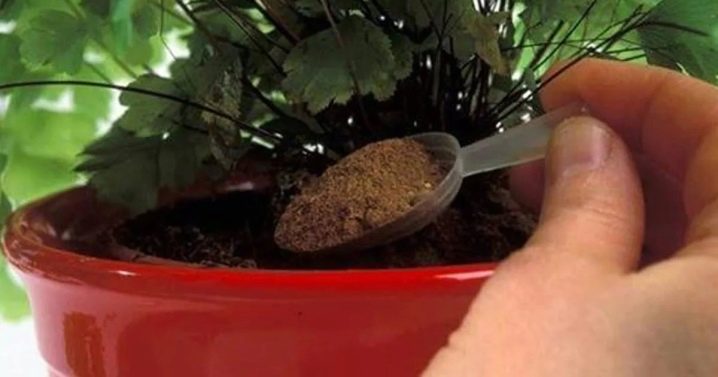
Watering
The foliage of this handsome man absorbs a large amount of moisture, therefore it is necessary to provide him with fairly frequent watering. This is especially important during the period of its growth. In the summer, this procedure is worth a little more often. It will be possible to determine the required time for yourself according to the state of the earth in the flowerpot. It should dry no more than half. In addition, you can do souls for cissus from time to time. However, it must be warm.
In winter, watering is slightly different from summer. It must be moderate, in addition, excess water from the pallet must be drained.
Watering should be done only when the ground is 2/3 dry in the flowerpot. This procedure must also be carried out with soft water at room temperature.
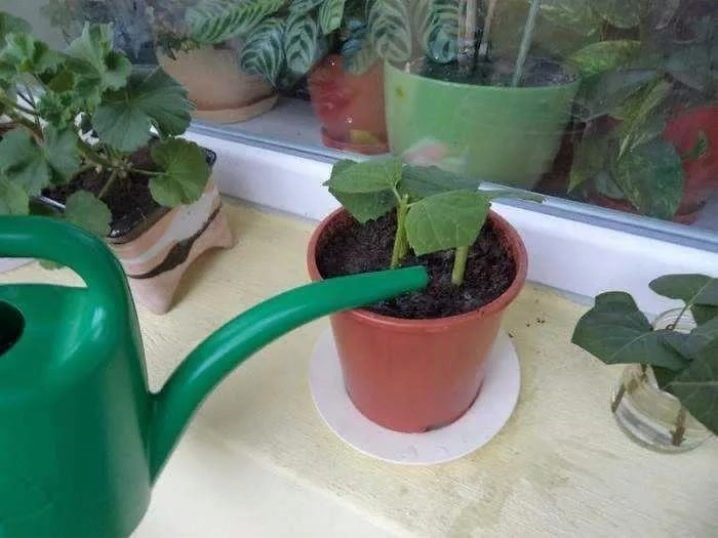
Pruning
Like any plant, cissus will need a procedure such as pruning. It can be carried out in several cases. For example, when a plant sheds all or half of its leaves, it is best to cut them off so that young shoots can form. So that the cissuss can develop well, and also be quite active, its shoots must be pinched periodically... During the spring period, you need to pinch it in half. This not only stimulates the plant, but also allows it to have beautiful and thick leaves.
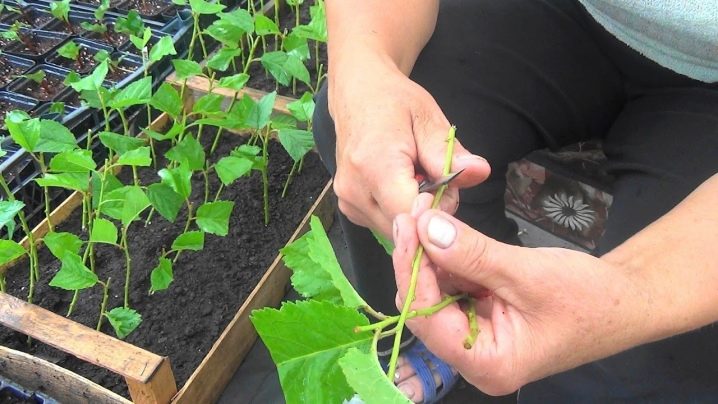
Transfer
To transplant a plant, you must either use a store-bought substrate or make it yourself. To do this, you need to connect the following components:
- 1 part deciduous humus;
- 1 part finer sand;
- 1 part peat;
- 1 part of turf land.
It is best to transplant after winter, already at the beginning of spring, but even before the onset of its flowering. In addition, a young plant requires an annual transplant. In this case, the pot should be slightly larger than the previous one and better ceramic, so that the root system can breathe freely. Older cissus can be transplanted much less frequently. At the bottom of the flowerpot, you need to put a layer of drainage, then a little earth, and only after that you can plant a flower in it.
This must be done quite carefully so as not to damage its roots. After that, the remaining voids should be filled with soil.
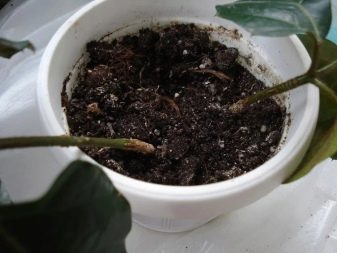

Reproduction
Having received such a plant in your collection, you will definitely want to increase it. At the same time, this can be done in various ways. It is worth considering all of them in more detail.
By dividing the bush
It is best to use this breeding option after winter. In addition, it is better to do this when transplanting a plant. An older cissus begins to form small processes on its own, which over time will not be able to fit in a flowerpot. It is for this reason that it is worth separating them. That is, the roots must be cut into several pieces with a sharp knife, and then planted in separate flowerpots. After a quick adaptation period, young seedlings will quickly grow.

Seeds
Many also use seeds for propagation. They can also be purchased at any gardening store. Working with such material is quite simple. First, the container must be filled a mixture of fine sand and peat. After that, seeds are placed in the prepared soil. They don't need to be buried too much - just press down lightly. After that, the ground must be watered, and the container must be covered with a film.
Further, everything must be put in a warm place and ensured regular watering. The first shoots may not appear so quickly, so do not worry about this.When the sprouts are fully grown, they can be transplanted to a "permanent residence". Most often, seeds of the arctic cissus are used for seed propagation.
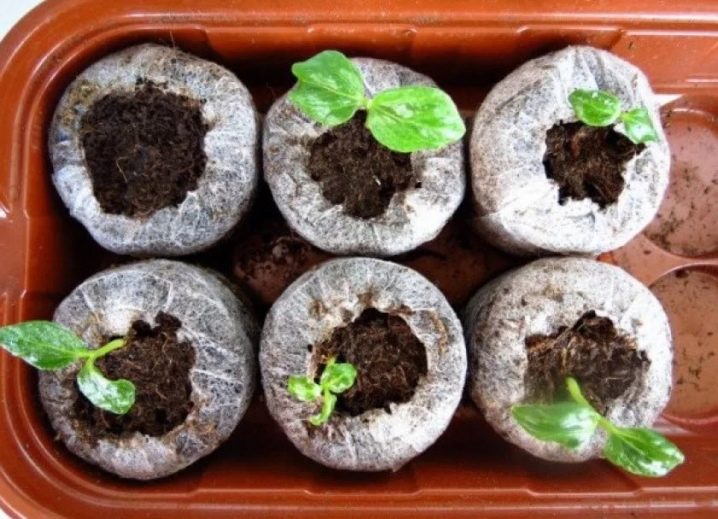
Cuttings
Gardeners use this method quite often. To implement this method of reproduction, it is necessary to make blanks of cuttings either in the spring or summer. Besides, cuttings must be with young buds. After harvesting, they must be placed in a container with water or in prepared soil. If rooting in water, then you need to wait for the appearance of roots, only after that they can be planted in the ground.
However, it is much easier to place the petioles directly into the ground. It must be well hydrated. Then the container needs to be covered with foil to make a small mini-greenhouse. When the cuttings are rooted fairly well, they can be planted permanently.

Diseases and pests
Although cissus is considered to be quite hardy, if provided with the wrong care, the plant will simply get sick. It is worth considering some of the causes of the disease.
- If the air in the room is too dry, you can see that the leaves are drying. In this case, it is necessary to carry out not only spraying, but also slightly moisten the ground around the flower itself.
- With too much heat, the leaves also dry out, but, in addition, they also fall off. In this case, you need to place the flower in a cooler place, and in the summer it is better to take it out into fresh air.
- In some cases, specks may appear on the leaves, which will indicate sunburn. This means that the plant needs to be darkened a little.
- When brown spots appear on the leaves of cissus, this will indicate a strong waterlogging of the soil. In this case, you need to dry the ground from above by 3 centimeters.
- If the leaves are shedding too quickly, you need to place the plant in a warmer place.
- When the plant has slightly slowed down its growth, this will only mean that the cissus lacks nutrients. Therefore, it will be necessary to urgently apply the necessary fertilizers.
In addition, from time to time, the plant should be examined for the presence of various pests.
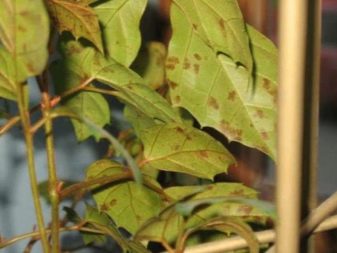
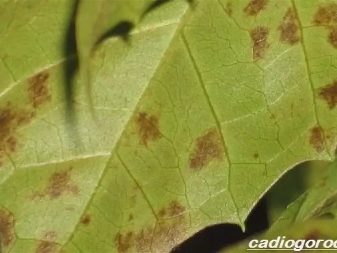
If any of them is noticed, it is urgent to do the treatment of the entire plant or only the infected areas.
- Spider mite. If a cobweb appears on the leaves, this will indicate the appearance of such a pest as a spider mite. When the plant is not too infested, you can try using a soapy solution. When it does not help, then the cissus must be treated with a chemical preparation. If this does not help, then it is necessary to repeat the spraying after 2 weeks.
- Shield. This insect has a brown shell. In the event of his attack, the leaves can not only dry out, but also completely fall off. It is best to use insecticides for control.
- Mealybug. These round insects are most often found on the leaves. To get rid of them, you must first remove them, and then treat the affected areas with a napkin dipped in soapy water. If this does not help, then it is imperative to treat the cissus with a special chemical.
- On too moist ground, there are small white-colored insects, which are called fools... In this case, the surface of the ground must be sprayed with an insecticide.

But when fighting any pests, it must be remembered that this plant is very sensitive to any chemical preparations. Therefore, the processing must be done carefully.
It is worth noting that by creating proper care and the necessary conditions for cissus at home, you can enjoy this evergreen plant throughout the year. This is a very unpretentious plant that pleases the eye even in those moments when it is just a green bush, and not a luxurious flower.In addition, if you multiply it, then you can give this handsome man to your loved ones or friends.
You can see how to properly care for a plant in the next video.























The comment was sent successfully.